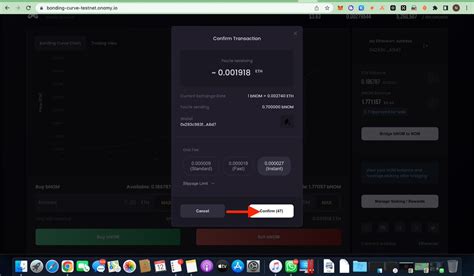Metamask: Why is it necessary to track some transactions in order to see them?
Metamaska: Why Some Transactions Require Tracking to Be Visible
When it comes to cryptocurrency transactions, transparency and visibility are key to ensuring trust and accountability within the ecosystem. However, one of the key challenges that arises is when certain types of transactions require tracking, meaning they must be visible on the blockchain in real time. In this article, we’ll explore why Metamask, a popular Ethereum-based wallet, requires tracking for some types of transactions.
What is tracking in cryptocurrency transactions?
Tracking refers to the process of discovering the origin and destination of cryptocurrency transactions on the blockchain. This can be useful for a variety of purposes, such as detecting potential double-spending attacks or tracking the movement of funds within a wallet. In the Ethereum ERC-20 token standard, which governs the transfer of ETH tokens, original transfers (i.e. direct exchanges between wallets) are typically untraceable.
Native ETH Transfers vs. Non-Native ETH Transfers
To understand why tracking becomes necessary for certain types of transactions, let’s compare native ETH transfers to non-native ETH transfers:
- Native ETH Transfers: These transactions take place directly between two Ethereum wallets without any intermediary. In contrast, non-native ETH transfers involve wrapping or converting ETH tokens into another asset (e.g. ERC-20 tokens) before transferring them.
- Non-Native ETH Transfers: These transactions require the use of specialized tools and techniques to track their origin and destination on the blockchain.
Why is tracking necessary for non-native ETH transfers?
To understand why tracking is necessary for non-native ETH transfers, consider the following:
- Private Transactions: When ETH tokens are transferred between wallets using wrapping or conversion, they become private transactions. This means that the recipient’s wallet and the sender’s wallet are not visible on the blockchain in real time.
- Lack of Transparency: Non-native ETH transfers are not transparent because the transaction is not visible to anyone except the parties involved (i.e. the recipient and the sender).
- Risk of Double Spend Attacks: By not tracking non-native ETH transfers, users are at risk of being double-spent on these transactions. If a malicious actor were to exploit this vulnerability, they could potentially spend Ethereum tokens twice without anyone noticing.
Metamask Tracking Requirements

Given the reasons above, Metamask requires tracking for certain types of transactions, including:
- ERC-20 Wrapped Token Transfers: These transfers involve wrapping ETH tokens in ERC-20 tokens, which can be used to transfer them between wallets.
- ERC-20 Unwrapped Token Transfers: In addition to wrapped token transfers, unwrapped token transfers also require tracking to ensure transparency and prevent potential double-spend attacks.
Conclusion
In conclusion, tracking is a key feature for cryptocurrency transactions that requires real-time visibility on the blockchain. Metamask’s requirements for tracking native ETH transfers, as well as non-native ETH transfers, highlight the importance of transparency and accountability within the Ethereum ecosystem. By understanding why tracking becomes necessary for certain types of transactions, users can better navigate the complexities of cryptocurrency transactions and protect themselves from potential risks.

Leave a Reply
Want to join the discussion?Feel free to contribute!